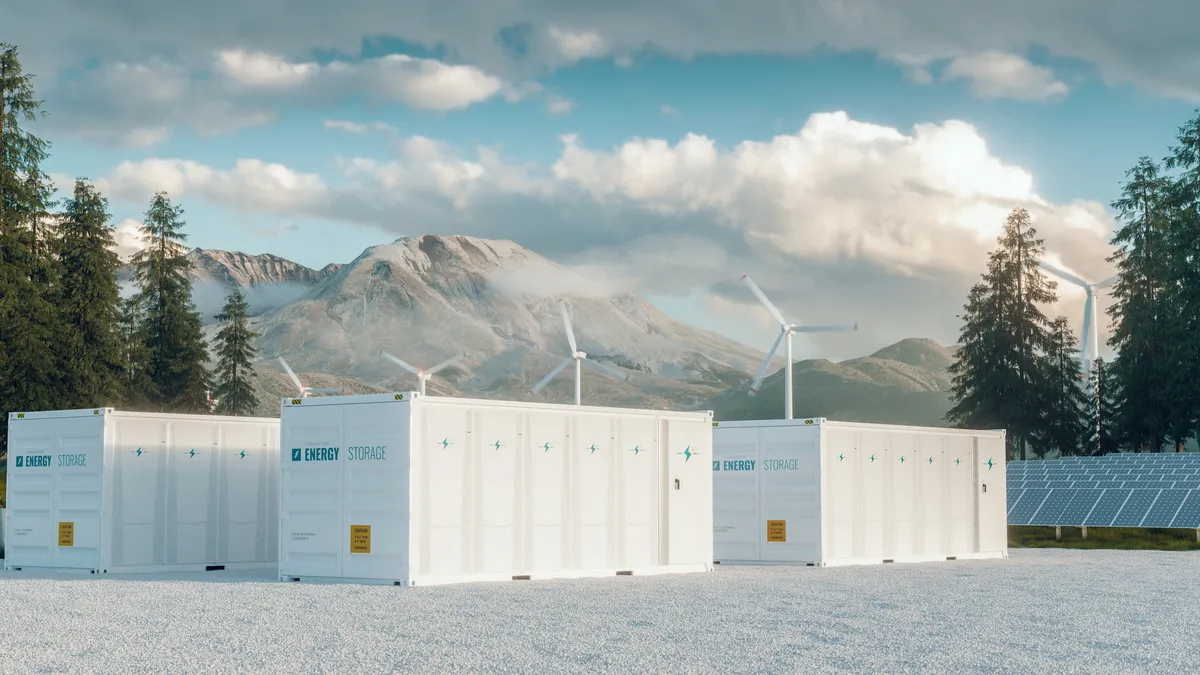Dive Brief:
- Pacific Gas & Electric on Friday proposed nine new battery projects, amounting to 1,600 MW/6,400 MWh, to provide energy and ancillary services in the California Independent System Operator markets, in a broader bid to help shore up the state’s electric grid.
- The nine projects consist of lithium-ion battery technology, providing four hours of storage. The projects — which are subject to approval by the California Public Utilities Commission (CPUC) — would boost the utility’s total battery storage capacity to over 3,330 MW by 2024.
- PG&E’s proposal is the result of a decision from the CPUC last June, directing California load-serving entities to procure a total of 11.5 GW of new electricity resources between 2023 and 2026. The resources will help the state replace the 2.2 GW Diablo Canyon nuclear plant — slated to retire in the middle of the decade — as well as a suite of natural gas plants.
Dive Insight:
The CPUC's 11.5 GW clean energy procurement order is the largest such directive from the agency at once, prompting CPUC Commissioner Clifford Rechtschaffen to refer to it as “a landmark decision,” during the June agency meeting where it was approved.
"This is enough to power about 2.5 million households in the state," Rechtschaffen said.
The order requires load-serving entities to bring on a minimum of 2,000 MW of new resources by mid-2023, another 6,000 MW by 2024, and increments of 1,500 MW and 2,000 MW in 2025 and 2026. Of that, PG&E has been tasked with procuring at least 2,302 MW between 2023 and 2026.
"As we work year-round to strengthen our electric system, we are also planning, engineering and building the grid for a future that harnesses the power of solar plus storage on an unprecedented scale," Joe Bentley, the utility’s senior vice president of electric engineering, said in a statement.
PG&E’s plan includes a proposed 15-year resource adequacy agreement with Vistra, which would expand the 400 MW/1,600 MWh Moss Landing energy storage facility by 350 MW/1,400 MWh. If approved, the expansion would make it the largest batter facility of its kind in the world.
If the proposal is approved by regulators, Vistra intends to begin constructing the project in May 2022 and put it into operation by June 2023. The developer expects it will be able to move forward with the project quickly as it already has an approved development permit for the site, as well as pre-existing interconnection and infrastructure.
These battery storage systems are necessary to maintain a reliable grid while integrating more renewables, Vistra CEO Curt Morgan said in a statement.
"With additional phases, this project could eventually reach 1,500 MW — enough to power approximately 1.125 million homes across the state of California with emission-free electricity," Morgan added.
Both short and longer-duration storage developers are seeing a huge market in California, driven in part by policy. The CPUC’s 11.5 GW procurement order also had a 1 GW carve-out for long-duration storage, with the ability to deliver at least eight hours of maximum capacity. Late last year, developer Hydrostor announced two planned long-duration projects in the state — a 500 MW/4,000 MWh storage facility in Southern California, as well as a 400 MW/3,200 MWh facility in San Luis Obispo County, both utilizing compressed air storage technology.















